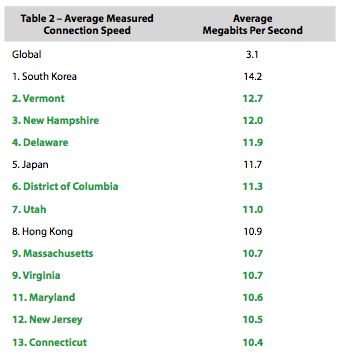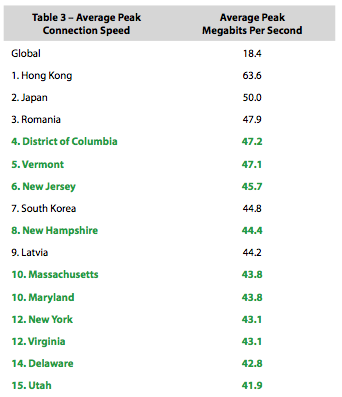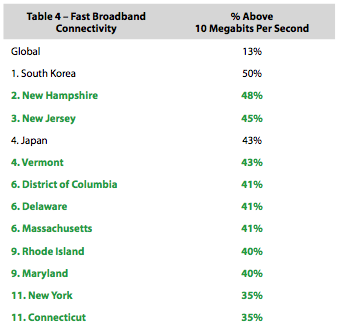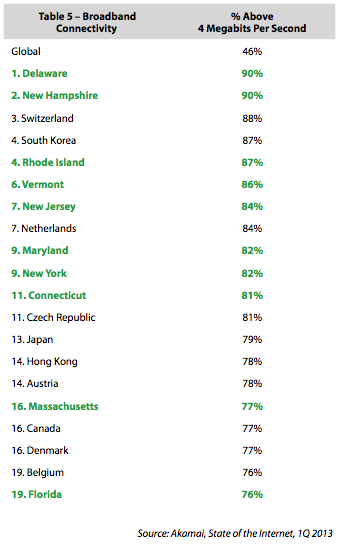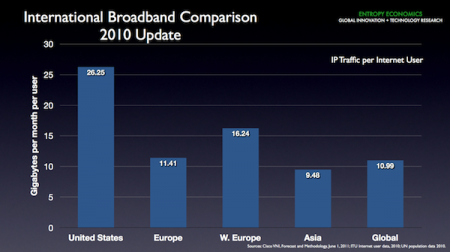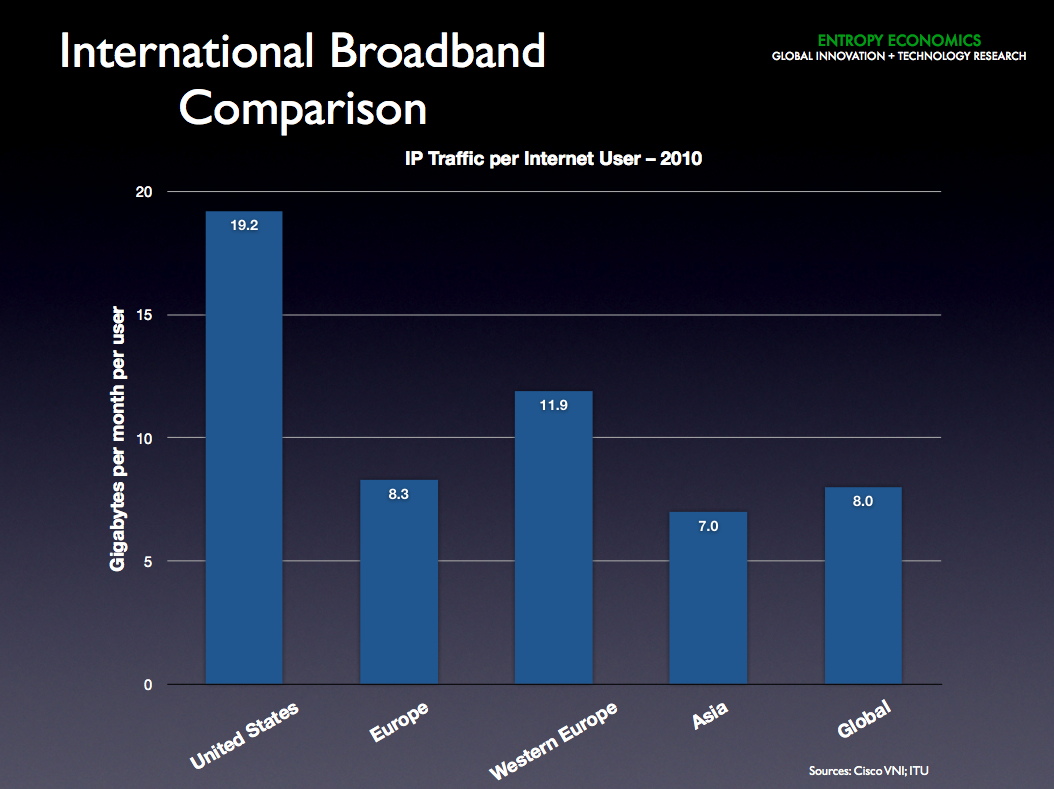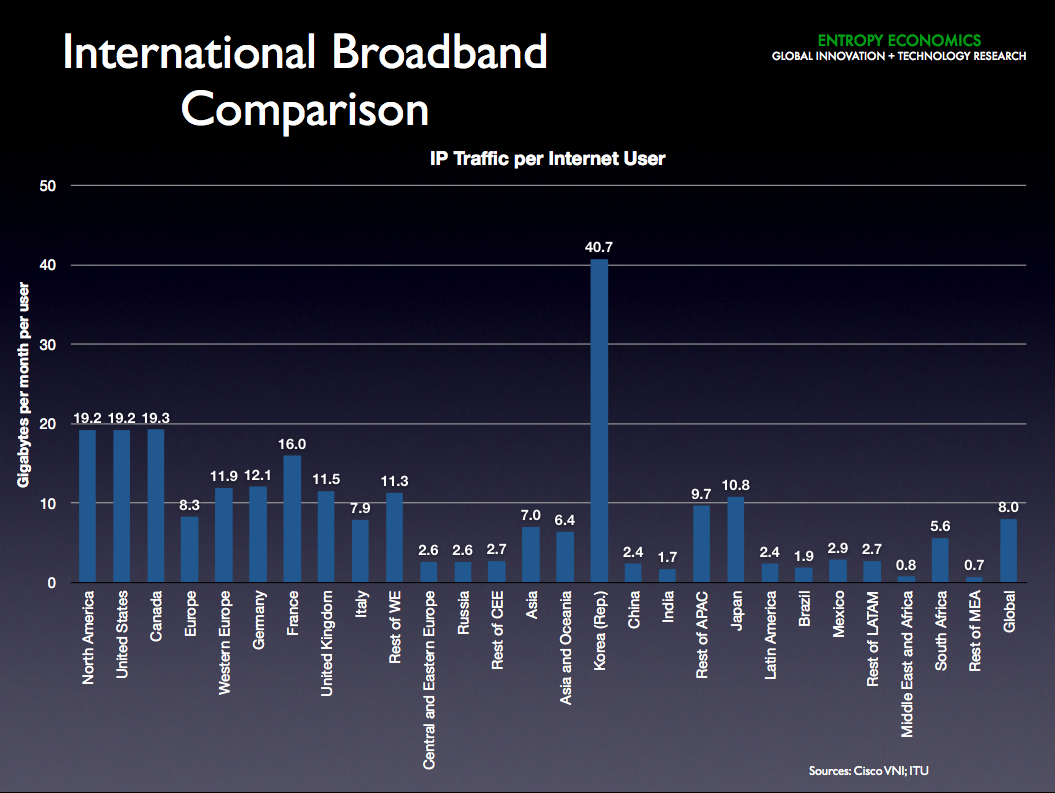My TechPolicyDaily colleague Roslyn Layton has begun a series comparing the European and U.S. broadband markets.
As a complement to her work, I thought I’d address a common misperception — the notion that American broadband networks are “pathetically slow.” Backers of heavier regulation of the communications market have used this line over the past several years, and for a time it achieved a sort of conventional wisdom. But is it true? I don’t think so.
Real-time speed data collected by the Internet infrastructure firm Akamai shows U.S. broadband is the fastest of any large nation, and trails only a few tiny, densely populated countries. Akamai lists the top 10 nations in categories such as average connection speed; average peak speed; percent of connections with “fast” broadband; and percent of connections with broadband. The U.S., for example, ranks eighth among nations in average connection speed. And this is the number that is oft quoted. (This is a bit better than the no-longer-oft-used broadband penetration figures, which perennially showed the U.S. further down the list, at 15th or 26th place, for example.) Nearly all the the nations on these speed lists, however, with the exception of the U.S., are small, densely populated countries where it is far easier and more economical to build high-speed networks.
How to fix this? Well, Akamai also lists the top 10 American states in these categories. Because states are smaller, like the small nations that top the global list, they are a more appropriate basis for comparison. Last winter I combined the national and state figures and compiled a more appropriate comparative list. Using the newest data, I’ve updated the tables, which show that U.S. states (highlighted in green) dominate.
Summarizing:
- Ten of the top 13 entities for “average connection speed” are U.S. states.
- Ten of the top 15 in “average peak connection speed” are U.S. states.
- Ten of the top 12 in “percent of connections above 10 megabits per second” are U.S. states.
- Ten of the top 20 in “percent of connections above 4 megabits per second” are U.S. states.
U.S. states thus account for 40 of the top 60 slots — or two-thirds — in these measures of actual global broadband speeds.
This is not a comprehensive analysis of the entire U.S. Less populated geographic areas, where it is more expensive to build networks, don’t enjoy speeds this high. But the same is true throughout the world.

